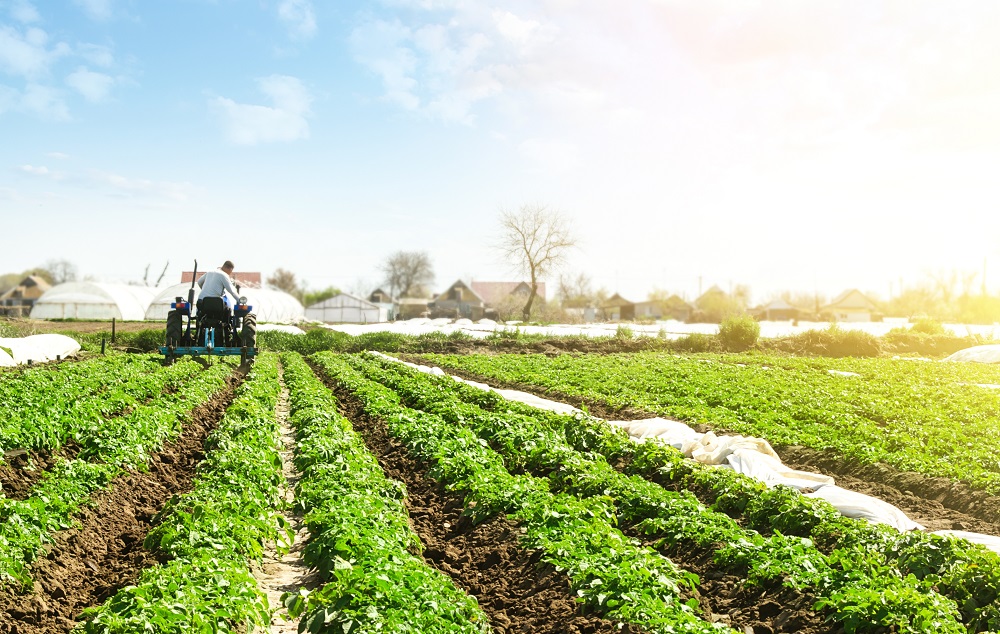Turkey’s economy has been developing at a rapid pace for several decades. Numerous sectors of the Turkish economy have seen substantial shifts. Agriculture has developed into a vital sector, providing not only food security but also a considerable portion of the export worth. As such, this discussion will examine the Turkish agricultural industry in terms of production, trade, and the evolution of policy reforms. Turkey is a global leader in agricultural and food product production. According to World Bank data, agriculture’s value-added increased from $27.5 billion in 2000 to $48.9 billion.
Historical Development of Agriculture
Agriculture continues to be the primary occupation of the majority of the Turkish people, although industry and services continue to grow in importance. Turkey is one of the few countries in the world that is self-sufficient in terms of food. Turkey’s fertile soil, temperate climate, and abundant rainfall enable the cultivation of virtually every crop. Farming is done in all of Turkey’s regions but is less prevalent in the mountainous eastern areas, where the primary activity is animal husbandry, which accounts for one-fourth of overall agricultural production’s gross value.
Agriculture in Turkey is also one of the greatest in the world in terms of agricultural lands. Around 35.5 percent of the country is covered by arable land, while 15 percent is covered by forest. As of 2016, agricultural land covered approximately 23.7 million hectares. Irrigation affects approximately 18.4 percent of arable land. Vegetable products make up 76% of overall agricultural production, followed by animal husbandry, forestry, and fishing.
The Journey of Agriculture
Fruits and field crops account for the majority of vegetable goods, with wheat being the most important. Turkey is the world’s largest producer of hazelnuts, figs, apricots, and raisins; the fourth-largest producer of fresh vegetables and grapes; the sixth largest producer of tobacco; the eighth largest producer of wheat; and the tenth-largest producer of cotton, according to 2015 statistics. Tea is also a significant crop that is produced and exported.
The country’s fast industrialization following the 1930s, combined with government policies, resulted in agriculture’s share of total income declining. Agriculturists contributed over 50% of GNP in 1950, 25% in 1980, 15.3% in 1990, 11% in 2005, and 8% in 2016. It resulted in a decline in farmers’ economic standards and increased rural-urban migration. However, in the 1990s, the state encouraged farmers to embrace modern techniques through mechanized and supplied irrigation and agriculture infrastructure, contributing to the agricultural sector’s development. The Southeast Anatolia Project is the most significant of these initiatives.
Greenhouse & Organic Farming
In Turkey, total greenhouse area is 772,000 decares, placing it fourth in the globe and second in Europe. In this area, 94% of the land is used to grow vegetables, 5% for fruit, and 1% is used to grow ornamental plants. Turkey is once again a world leader in terms of geothermal resources. It is ranked seventh internationally and first in Europe. The greenhouse sector has an efficient infrastructure, and production is expanding as a result of technological advancements. Additionally, the government provides favorable incentives to the sector.
The country offers incredible prospects for organic farming, owing to the country’s adequate soil and technical infrastructure. The Turkish government provides incentives for organic farming, and organic agriculture legislation is being drafted by EU standards. Italy, Germany, the Netherlands, France, Belgium, and the United Kingdom are the primary export countries, and the most exported productsare wheat, figs, fruits, hazelnut, apricot, lentil, raisin, and chickpea. There are 2.371,612 million tons of items manufactured in recent years.
Major Industrial Crops
Cotton, tobacco, and sugar beets are Turkey’s primary industrial crops. Cotton is critical to the wider economy since it provides the fiber for textiles, Turkey’s largest export category. Cotton is largely farmed on the southern and southwestern Mediterranean and Aegean seas’ coastal plains. Turkey’s economy also relies heavily on perishable fruits and vegetables. The country produces 80 varieties of fresh fruits and vegetables and exports 30 species of vegetables and 20 varieties of fruit. Grapes, citrus fruits, melons, potatoes, onions, tomatoes, olives, and cucumbers are just a few examples. Turkey receives nearly $1 billion in these exports each year.
Turkey is also a significant player in the global commerce of edible nuts and dried fruits. Hazelnuts, pistachios, sultanas, dried apricots, and dried figs are also significant exports in this category of agricultural products. Hazelnuts have been farmed along the Black Sea coast since 300 B.C., and Turkey is a major producer, competing in worldwide markets with Spain, Italy, and the United States. Turkish hazelnut production peaked at 580,000 tons in 1998. Another thing that makes Turkey so remarkable is that is the world’s biggest producer of figs, with 36% of the world’s production and 70% to 80% of all global exports.

